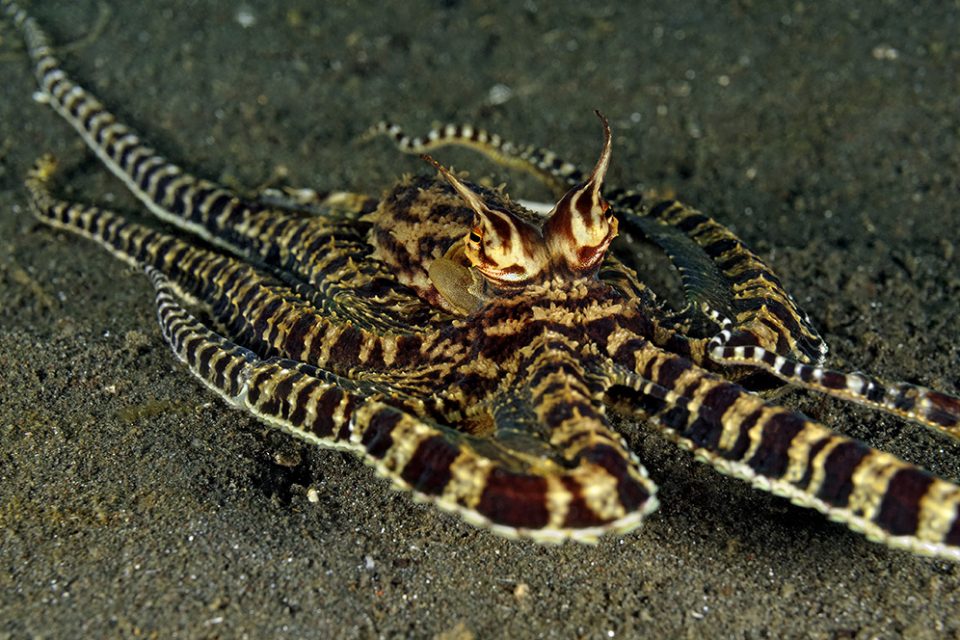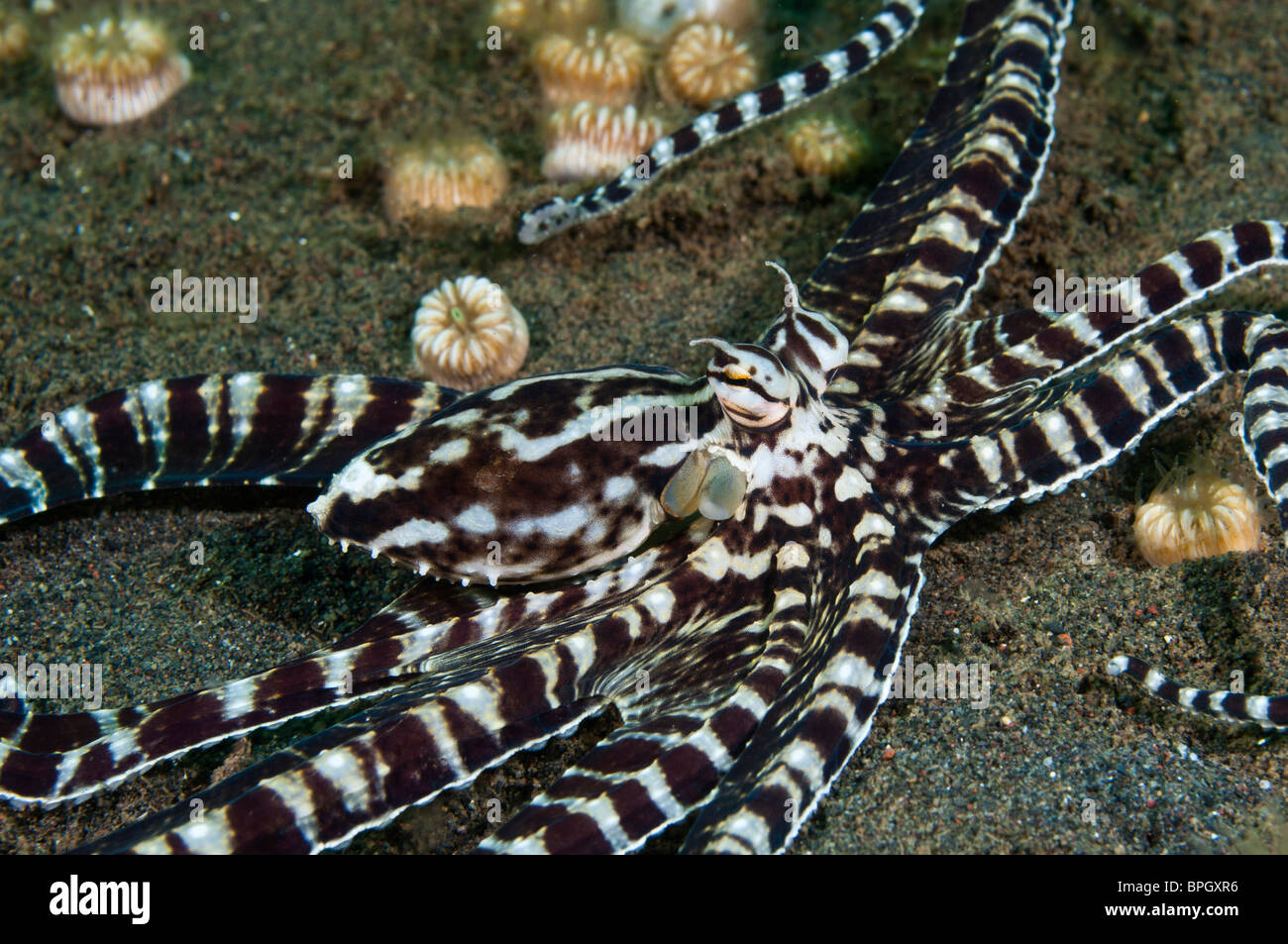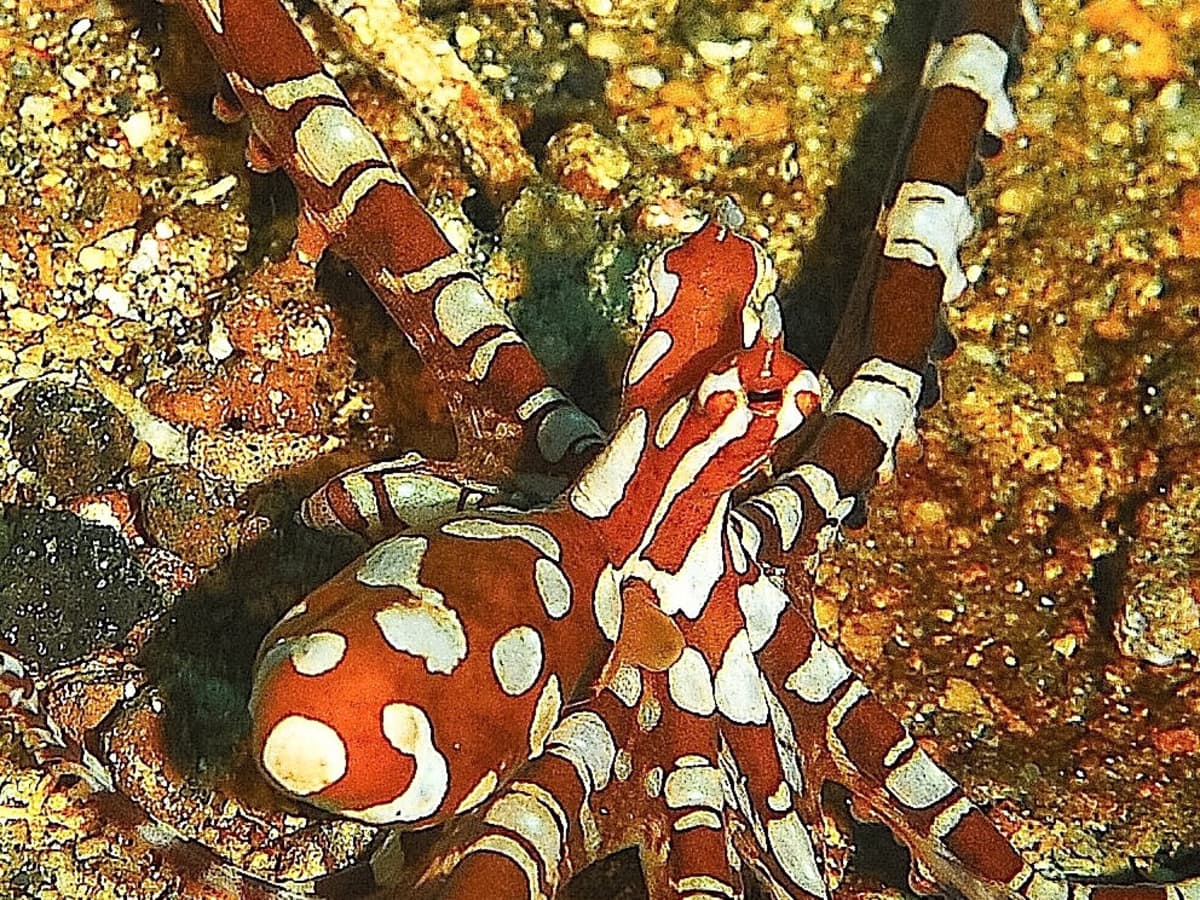

And, he says, "we plan to study this-and other cases-in much more detail." "Mimicry is a fascinating subject and there is not much known about it in the oceans," Rocha says. Rocha and his colleagues still aren't sure how often these copycat fishes follow the octopuses-whether they're a frequent tagalong or just an occasional accessory. "After many generations the ones that resembled more the octopus pattern probably had a better chance of survival and of leaving more offspring." "My best guess is that the color came first, and the behavior of following the octopus came later," Rocha says. One adult was found and this suggests that their geographical distribution is larger than currently documented. This newly described mimic-mimic might offer some clues. A mimic octopus Thaumoctopus mimicus is documented for the first time in Australian waters off Lizard Island, Great Barrier Reef, Australia during a low tide on 4 June 2012.

But researchers have puzzled over how complex behavioral mimicry adaptations might have evolved. And other fish have been observed engaging in such opportunistic mimicry (such as the bluestriped fangblenny, which masquerades as a cleaner wrasse when they inhabit the same waters). Plenty of organisms have disguised themselves to look like other, less appetizing objects (take a walking stick insect or a viceroy butterfly). "So, if the jawfish was just sitting over open sand it probably wouldn't look like a lionfish." The shy little jawfish, which spends most of its time hiding in burrows in the sand, seems to be taking advantage of the advanced disguises of the bigger, bolder octopus, darting around its stripped arms-a strategy that could easily mask it to visual predators. Why do the researchers think the fish is mimicking the octopus-and not the original model, such as a lionfish or sea snake? "The jawfish matches the color of the mimic octopus, but it only gains protection when it swims beside the octopus," Rocha says. But as far as a mimic-inspired camouflage behavior, "this is a first," he says. "There are some cases in which many species mimic the same model," Luiz Rocha, of the California Academy of Sciences, explained to me via email. It can take the shape of not only objects, such as coral and rock, but. What also makes this animal different from its relatives is its particular skill. This astonishing species has an incredible capacity for impersonating other ocean animals.

The encounter, which was filmed by Godehard Kopp of the University of Gottingen, was described as "opportunistic mimicry" last month in a paper in Coral Reefs. Mimic Octopus Facts Firstly, the fabulous Mimic Octopus, Thaumoctopus mimicus, is a unique species of octopus. But they have now been one-upped by a tiny fish that mimics them (or at least takes advantage of their complex patterning and movement to better camouflage itself).Ī black-marble jawfish ( Stalix histrio) was spotted last July in Indonesia swimming among the arms of a mimic octopus. Mimic octopuses ( Thaumoctopus mimicus) have one-upped their well-camouflaged cousins by actively impersonating other sea creatures-such as venomous sea snakes and lionfish-by changing their body shape and movement.


 0 kommentar(er)
0 kommentar(er)
